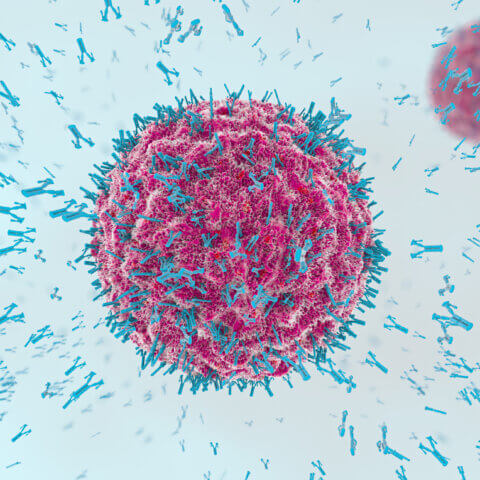Last Updated: July 11, 2025, 9 am UTC
In vitro / in vivo correlation (IVIVC) is a scientific approach used to establish predictive relationships between laboratory-based drug release profiles (in vitro) and pharmacokinetic behavior in humans (in vivo). By linking dissolution data with plasma concentration profiles, IVIVC helps predict how a drug will perform in patients — streamlining development, enhancing formulation strategies, and supporting regulatory decisions.
The Value of IVIVC in Modern Drug Development
The establishment of an IVIVC model is recommended by regulatory authorities for most modified release dosage forms. The primary advantage of IVIVC is that it provides a mechanism for evaluating the change in in vivo drug absorption based on in vitro dissolution changes when there are minor formulation changes. Once a validated IVIVC model has been established, it can serve as a predictive tool for bioavailability and bioequivalence (BA/BE) assessments using existing in vitro data. This allows for the derivation of critical pharmacokinetic information using only dissolution test results without necessitating additional clinical bioequivalence studies involving human subjects.
Another advantage of IVIVC is that it enhances better understanding of the drug product’s characteristics, facilitating the establishment of broader acceptance criteria and improving formulation stability. IVIVC can also be particularly useful for predicting the in vivo effects of changes to the formulation components, manufacturing process, or manufacturing facility. This predictive capability can prove crucial during initial product development; however, the value of IVIVC extends beyond the early phases. After product approval, IVIVC can be instrumental in assessing the impacts of post-approval manufacturing changes, changes in manufacturing sites, and any issues with individual manufactured lots. This comprehensive analysis can be conducted without incurring the costs associated with repeating in vivo bioequivalence studies.
Benefits of IVIVC
IVIVC offers significant advantages across various drug development programs and submission types. IVIVC analyses can support:
- New Drug Applications (NDA) for oral drugs claiming extended release
- Abbreviated New Drug Applications (ANDA), facilitating the approval process for generic drugs
IVIVC can play a crucial role in supporting biowaivers, enabling Sponsors to waive in vivo BA and/or BE study requirements. When requesting biowaivers for manufacturing process or facility changes, IVIVC can substitute for certain otherwise required in vivo studies, provided that sufficient model data on safety and efficacy have been established.
IVIVC can also be integrated into the Quality by Design (QbD) framework, which aims to establish clinically meaningful specifications for drug products, with dissolution testing serving as a key endpoint.
Once a sponsor has validated an IVIVC model, they can then utilize the following technological benefits of it for their drug product development:
| Benefit | Description |
| Formulation Optimization | Optimizes formulation parameters (e.g., excipient selection, particle size, coating techniques) to improve performance and ensure consistent bioavailability. |
| Reduced Need for Animal Studies | Strong in vitro–in vivo correlation can replace some animal studies, supporting ethical research and accelerating timelines. |
| Pharmacokinetic Modeling | Strengthens PK models by linking lab data with real-world absorption and exposure profiles. |
| Biorelevant Dissolution Testing | Simulates GI conditions and variable fluid dynamics to more accurately predict how a drug will behave in the body under diverse physiological scenarios. |
| PBPK Modeling Integration | Combines IVIVC with physiological modeling such as organ perfusion rates, tissue distribution kinetics, and metabolic pathways, for more precise human drug simulations. |
| Bioequivalence Studies | Demonstrates bioequivalence between generic and reference drugs, aiding regulatory approval. |
| Machine Learning & AI | Analyzes complex datasets to uncover patterns and improve prediction accuracy. |
| Change Evaluation | Assesses impact of formulation or manufacturing changes on in vivo performance. |
| Quality Control | Links batch variability in formulation to clinical performance, ensuring consistency. |
| Regulatory Support | Provides scientifically sound evidence for biowaivers and product consistency. |
| Cost-Effective Development | Identifies formulation issues early, reducing the risk of expensive late-stage failures. |
By leveraging IVIVC, sponsors can enhance the robustness of their regulatory submissions and optimize their development processes.
FDA Guidance for IVIVC
The FDA Guidance, “Extended Release Oral Dosage Forms: Development, Evaluation, and Application of In Vitro/In Vivo Correlations” was released in Sep 1997 but remains the best source of regulatory guidance on IVIVC. The recommendations within the guidance cover IVIVC for oral, extended release drug products that are being developed for regulatory submission review as part of an NDA or ANDA. The guidance outlines how to:
- Develop an IVIVC model
- Evaluate predictability
- Apply IVIVC as a surrogate for in vivo BE studies
- Use IVIVC to establish specifications for dissolution
Levels of IVIVC
There are three primary IVIVC categories, known as Levels A, B, and C. The three levels differ in their complexity and the degree of correlation they establish between in vitro and in vivo data. Level A is the most common type of IVIVC established for drug development projects and is used primarily for regulatory submissions. Level C can be useful in the early stages of development and is the second most common. Level B correlations are significantly less common.
| Aspect | Level A | Level B | Level C |
| Definition | Point-to-point correlation between in vitro dissolution and in vivo absorption. | Statistical correlation using mean in vitro and mean in vivo parameters. | Correlation between a single in vitro time point and one PK parameter (e.g., Cmax, AUC). |
| Predictive Value | High – predicts the full plasma concentration–time profile. | Moderate – does not reflect individual PK curves. | Low – does not predict the full PK profile. |
| Regulatory Acceptance | Most preferred by the FDA; supports biowaivers and major formulation changes. | Less robust; usually requires additional in vivo data. | Least rigorous; not sufficient for biowaivers or major formulation changes. |
| Use Case / Notes | Requires ≥2 formulations with distinct release rates (e.g., slow, medium, fast); a single formulation may be acceptable in specific cases. | Compares mean dissolution time with mean residence or absorption time; not suitable for quality control specifications. | May support early development insights but must be supplemented for regulatory acceptance. |
Navigating Challenges and Expanding Frontiers
While the predictive power of IVIVC holds immense promise for revolutionizing drug development and regulatory approval paradigms, several challenges warrant careful consideration (see Figure 1). Proactive strategies such as Quality by Design, PBPK modeling, and AI-driven analytics can help overcome these challenges and enhance the reliability and regulatory acceptance of IVIVC models.

Future Perspectives
IVIVC is among numerous technologies at the forefront of technical sophistication in modern drug development. Looking ahead, the convergence of advanced technologies such as artificial intelligence-driven modeling platforms, microfluidics, organ-on-a-chip systems, and high-throughput screening assays holds immense potential for augmenting the predictive power and scope of IVIVC studies. By embracing these technological advancements synergistically with traditional development methodologies, pharmaceutical researchers can unlock new frontiers in precision pharmacology and personalized drug therapies where drugs are tailored with unparalleled precision to meet individual patient need, while simultaneously accelerating drug development timelines.
Conclusions
The establishment of in vitro / in vivo correlation (IVIVC) offers several significant advantages in pharmaceutical development. IVIVC enhances our comprehension of dosage forms and serves as a predictive tool capable of reducing the necessity for specific clinical bioequivalence studies. Furthermore, it aids in the interpretation of batch-to-batch variability and facilitates the optimization of formulation development, ultimately streamlining both product development and manufacturing processes. Nonetheless, the development of a robust IVIVC model presents substantial challenges that must be carefully addressed to realize its full potential.
If you would like to discuss whether an IVIVC approach would be appropriate for your development program, contact us today.
ABOUT PREMIER RESEARCH:
Premier Research, a global clinical research, product development, and consulting company, is dedicated to helping innovators transform life-changing ideas and breakthrough science into new medical treatments. We offer strategic solutions across the entire development lifecycle, from pre-clinical through commercialization, specializing in smart study design and full-service clinical trial management.
Leveraging technology and therapeutic expertise, we deliver clean, conclusive data with a focus on reducing development timelines, securing access to the right patients, and effectively navigating global regulations to ensure submission-ready results.
As an organization that puts patients first, we pride ourselves on helping customers answer the unmet needs of patients across a broad range of medical conditions. Visit premier-research.com.
REFERENCES:
[1] Guideline on the Pharmacokinetic and Clinical Evaluation of Modified Release Dosage Forms (EMA/CPMP/EWP/280/96 Corr1), European Medicinal Agency, Nov 2014.
[2] FDA Guidance for Industry. Extended Release Oral Dosage Forms: Development, Evaluation, and Application of In Vitro/In Vivo Correlations. Sep 1997.

 Webinar
Webinar 


 Perspectives Blog
Perspectives Blog 